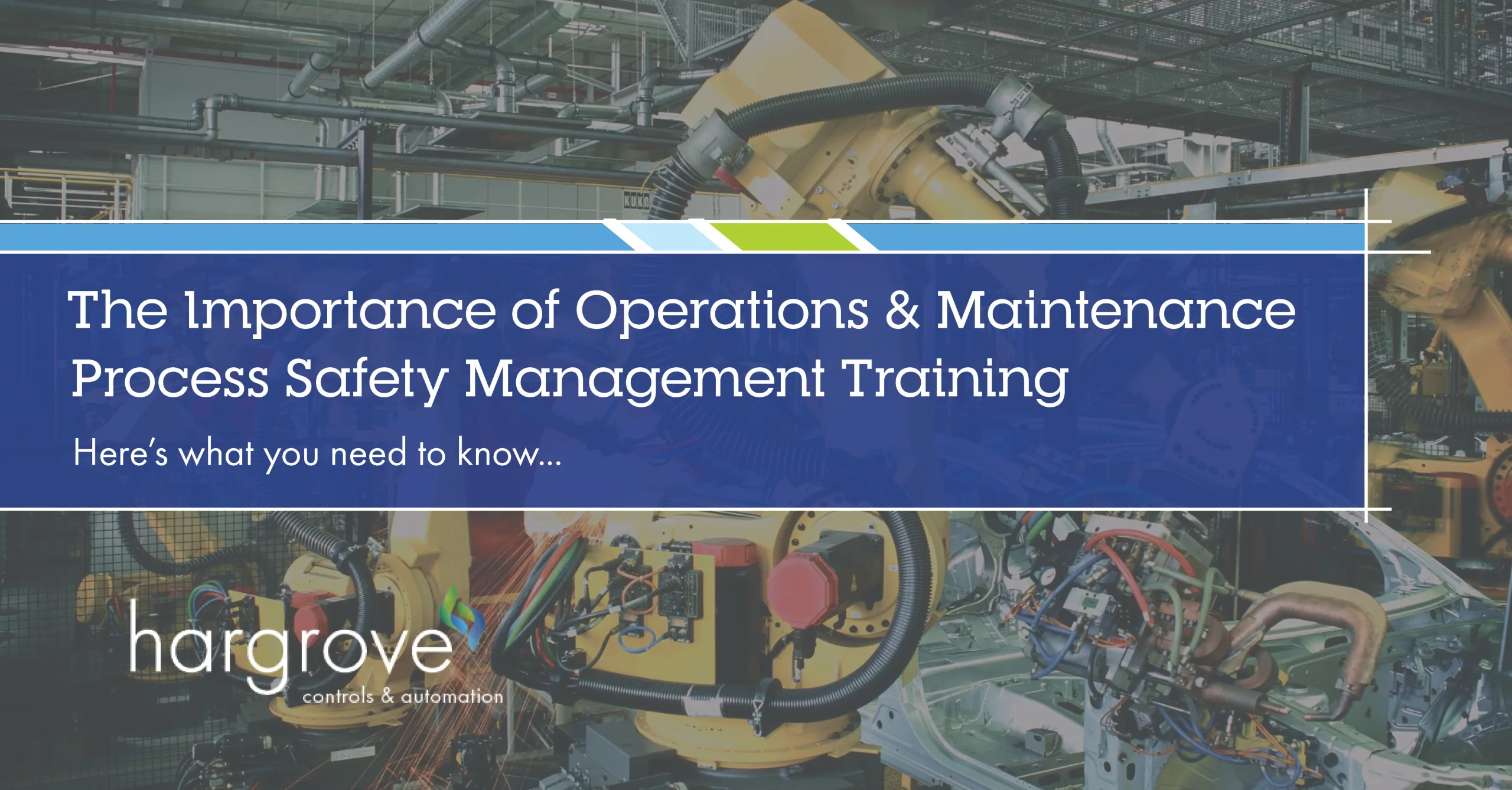The Importance of Operations & Maintenance Process Safety Management Training

The constant chirping of your smoke detector alerts you to change its batteries. While the chirping can be annoying, you know that your device needs to be operational in order to protect you and your family from a fire.
Alarms depend not only on the sound itself, but on the operator’s response to it.
Safety alarms are everywhere. Plant personnel such as operators and maintenance workers have the most contact with your manufacturing assets during the longest part of the safety life cycle – the Operate and Maintain phase. During start-up activities, emergency situations, and shutdown, your non-safety personnel need to understand the complexities and technical aspects of your Safety Instrumented Systems (SIS).
Process Safety Management (PSM) training for non-safety personnel is an essential component of maintaining OSHA compliance, providing a safe working environment, and getting the maximum risk reduction from safeguards. Here’s what you need to know.
What is Process Safety Management Training?
PSM identifies the risks in a process and determines ways to minimize those risks. These risks include injuries or fatalities to people in or around the production site, environmental damage, and equipment and/or facility damage and can occur in all manufacturing plants.
PSM training is one way to prevent or minimize the consequences of the risks inherent in a manufacturing environment. Proper PSM training involves educating the personnel who deal with the operating unit on a daily basis about the risks that are present and what measures are required to minimize those risks.
Training is required by the Occupational Safety and Health Administration (OSHA), a section of federal law that requires safe working conditions. OSHA calls for employers to develop a written plan regarding process safety management and to consult with employees about the development of process hazard analyses. This information enables operators and maintenance personnel to identify and understand the hazards posed by those processes.
OSHA doesn’t have specific guidelines on how employers must achieve safe working environments. OSHA defers to Recognized and Generally Accepted Good Engineering Practice (RAGAGEP), a concept known to industry specialists as a means to achieve safety in the workplace and to comply with federal law. International Electrotechnical Commission (IEC) developed the international standard in response to OSHA’s requirement for PSM. OSHA has recognized ANSI/ISA-61511 (IEC 61511) as RAGAGEP.
All persons involved with your SIS systems must have adequate training and experience to competently operate your Safety Instrumented Systems.
Training your Target Audience
Your operators, maintenance personnel, project managers, and other engineers are tangentially involved and/or work around the safety system in a process area, but they aren’t Process Safety professionals. Most of their time is spent operating and maintaining the system rather than evaluating and mitigating hazards.
Any non-safety personnel need to understand that safety systems and functions have been designed and put in place to protect them and their coworkers. They should be aware that alarms (process alarms, fault alarms, etc.) are important and that bypassing alarms for maintenance or testing is a serious matter.
They also need to understand that any non-SIS layer of protection plays an important role, even if it isn’t labeled as “SIS” – for instance, if your operators allow a tower to operate at a level higher than the normal operating level as indicated in the SOP.
Benefits of PSM Training
PSM training is often overlooked, even by companies who otherwise embrace PSM practices. Investing in PSM training is relatively inexpensive and has the following benefits:
Increases Safety Awareness
Training increases the understanding and knowledge of an operating unit. It increases the operator’s situational awareness by allowing them to reflect on their situation, identify hazards and risks, and anticipate potential outcomes. Operators need to understand what safeguards (such as PPE) should be employed to minimize risks. A Job Hazard Analysis (JHA) is a good example of a tool to help with identifying safeguards.
Acts as a “Force Multiplier”
With trained personnel, your Safety System is more effective, and your personnel are more engaged with the operation and maintenance for future evaluations. After all, they are most familiar with the system on a daily basis.
Promotes Safety Culture
Setting a high safety expectation for personnel protects and promotes the well-being of all personnel at your manufacturing site. It also increases the understanding of the Standard Operating Procedures (SOP) and decreases the risk of incidents that could harm your personnel or the surrounding area.
PSM Training with Industry Specialists
PSM training is a basic approach and is not intended to make anyone an expert on SIS. Hour-long trainings that include videos, lectures, and exams can be offered on-site or off-site and give an overview of PSM concepts and the safety life cycle.
During a PSM training course, participants could be presented with the following information:
- Principles of functional safety management and the key features of IEC 61508 / IEC 61511
- Requirements and importance of the safety life cycle
- Key deliverables from the operations & maintenance safety life cycle phase, roles, and responsibilities
- Key factors used within the SIS engineering and design phase such as random hardware failure, architectural constraints, and systematic capability
- Requirements for proper inspection, operation, and maintenance of installed SIS as required by the safety standards
- Impacts of the SIS and its safety instrumented functions (SIFs) from good and bad maintenance
Operations & Maintenance PSM Training with Hargrove
Here at Hargrove, we prioritize safety.
Hargrove’s group of experienced and certified Functional Safety Engineers can tailor a training program for your site. We offer SIS training module sessions to address the intent of your SIS, as well as routine operation and maintenance of your equipment.
For more information, visit our website or contact us today.
OSHA Information
For more information on OSHA 1910.119 (Process Safety Management of Highly Hazardous Chemicals), go to the OSHA website.
ANSI/ISA-61511 (IEC 61511) Information
For more information on IEC 61511, visit the ISA website.

